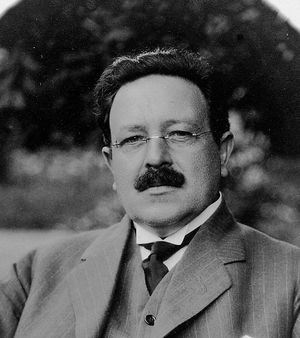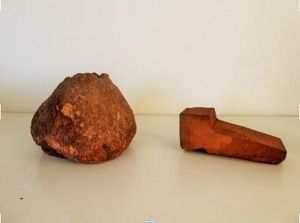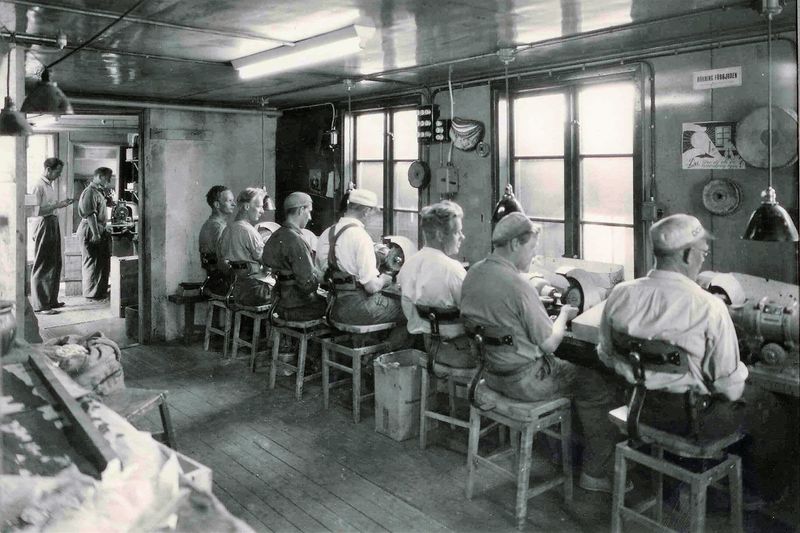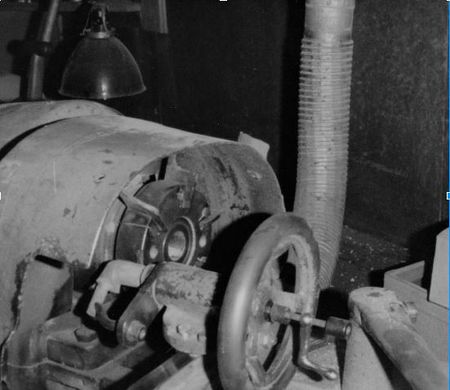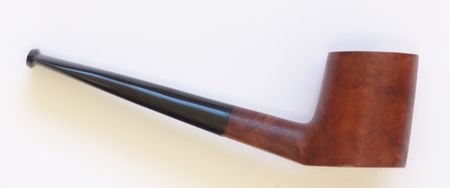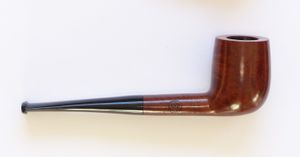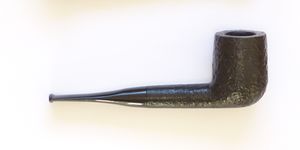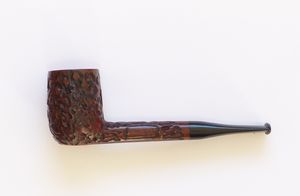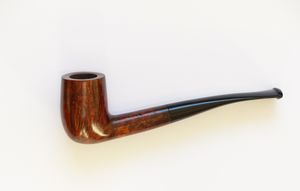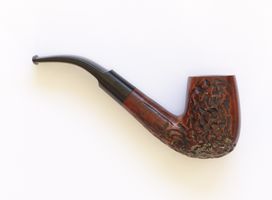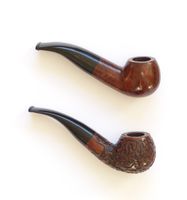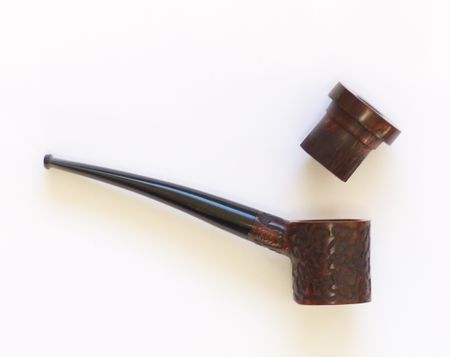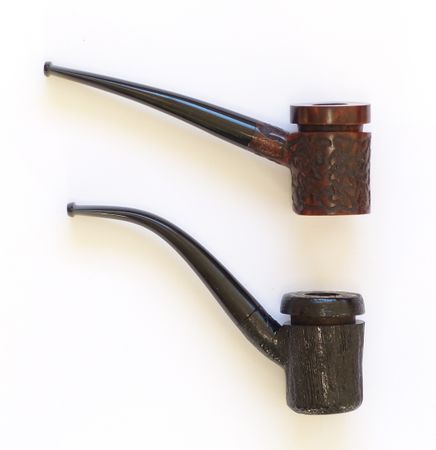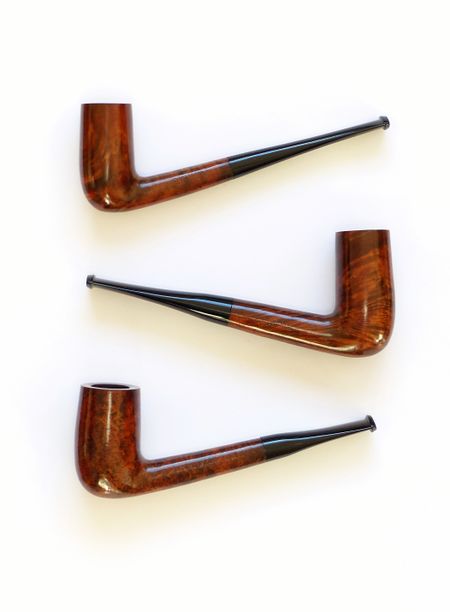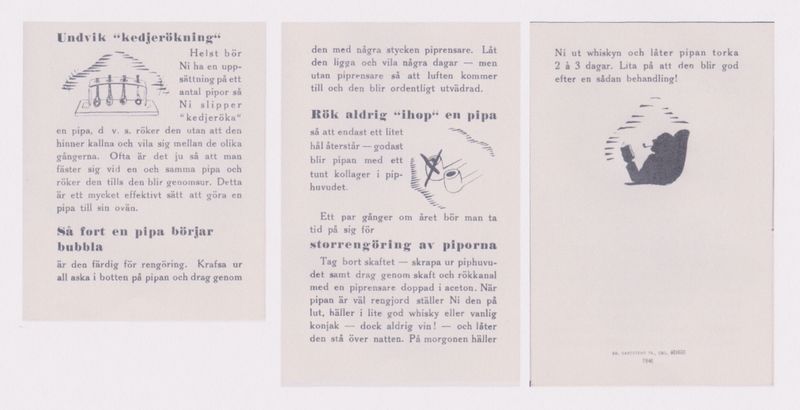Svenska Rökpipfabriken
Many thanks to Hillevi Hellström, Gösta Eliason’s daughter, who has written this excellent article:
“Svenska Rökpipfabriken” (the Swedish Smoking Pipe Factory), or just “SRF”, was founded in 1931 in Lerum by father and son Hjalmar and Gösta Eliason. It was the first briar pipe factory in Sweden and for a long time also the only one.
Hjalmar had been working in the tobacco industry for many years before the start of SRF, as Managing Director of both Ystads Nya Tobaksfabrik and Tobaksfabrik AB Göta. Gösta had studied the art of woodwork and then had an internship for a year at a factory in Kleinlützel, Switzerland, where he learned the craft of pipe production.
Gösta headed the manufacturing while Hjalmar handled the wholesalers and dealers until his retirement in the early 1940's.
The company started out with the founding duo and two employees. Over the years the number of workers varied between four and fifteen.
Gösta designed the SRF branded pipes. Large customers such as Pibe Dan in Copenhagen had their own models that SRF produced. SRF also met the demands of individual customers and made pipes one-off according to these clients’ custom designs. Sigvard Bernadotte, Prince of Sweden, has designed a number of one-off models made by SRF.
Among the largest customers in later years were the Tobacco Dealers Sanden, Broberg and Pipcenter in Gothenburg and Pibe DAN in Copenhagen. At that time, with 5 employees, SRF produced 7 200-8 400 pipes per year. In total, around a million pipes were produced.
The briar were in the beginning purchased from Algeria and Corsica but later mostly from Spain. The
blocks came in 100-liter jute bags and were transported to Gothenburg by boat. During the Second World War, when briar was difficult to get by, pear tree was used as a substitute instead. The pear tree was however not as heat resistant as those produced from briar.
There were 32 different steps to making a pipe, could differ depending on model. It started at the lathe, then the milling machine and after that followed 11 steps of grind and polish. The first lathe used, which Gösta brought home from Switzerland, was hand driven. The lathes used after that were manufactured by local smiths.
Surface treatment, such as paint and surface texture, was chosen based on the quality of wood. Wood of finer quality was just polished with wax. The lesser quality of the wood, the more colour bets and surface treatment were applied. The colours used were brown, maroon or black. The most common surface treatments were:
- Hunter, polished with wax.
- Rex, a smooth polished surface where small cavities / defects in the wood are repaired with putty. The cavities were so small and the reparation were so good that they were hard to detect. (In the beginning Rex was a name for a model).
- Shell, a blasted surface made with a rotating steel brush blade.
- Rustic, a roughed surface in straight lines or in wavy patterns. The surface was treated with a special steel and was created by
hand.
Before delivery, the pipes had a first smoke by a machine to give the customer a good smoking experience right away. The walls of the pipe chamber were treated with a batter of sugar, tobacco ash and tobacco. They were then stuffed with tobacco mixed with some kitchen paper and smoked by a suction machine.
Repairs were sent from near and far and also collected at stores in Gothenburg and Lerum. The repairs were registered on Monday and processed during the week to be mailed or personally delivered on Friday. In 1977, there were about 1000 repairs per month.
Svenska Rökpipfabriken closed in 1979 when Gösta and the employees retired. Some machines were sold to craftsmen, but the SRF activities were not passed on.
- Examples of some of the SRF models
- Examples of SRF Doc’s pipe, which has a removable bowl and a large reservoir where the juice collects, making it easy to keep clean
- Some of the models SRF made on behalf of Pibe DAN
SRF published a booklet in 1946 "How do I care for my pipe ?" Advice includes the following:
- Avoid chain-smoking – do use several pipes. Let it cool down between smoking sessions.
- To do a major cleaning;
- Remove the stem, scrape out the pipe head.
- Drain a pipe-cleaner dipped in acetone through the head of the pipe.
- Pour whisky or cognac into the bowl and let it be there overnight, then pour it out.
- Let the pipe dry for 2 or 3 days.
The factory formerly listed as "Sveska Pipfabriken" is actually Svenska Rökpipfabriken (SRF). The factory was in Lerum outside Gothenburg. SRF produced the pipe brands Fix, Rex and Redo.
From Pipes, Artisans and Trademarks, by José Manuel Lopes
Sveska Pipfabriken is a former Swedish factory in Lerum, near Gothenburg. Founded in 1931 by Gösta Eliasson, who learned the art in Switzerland. It was sold in 1979 and closed some years later.

